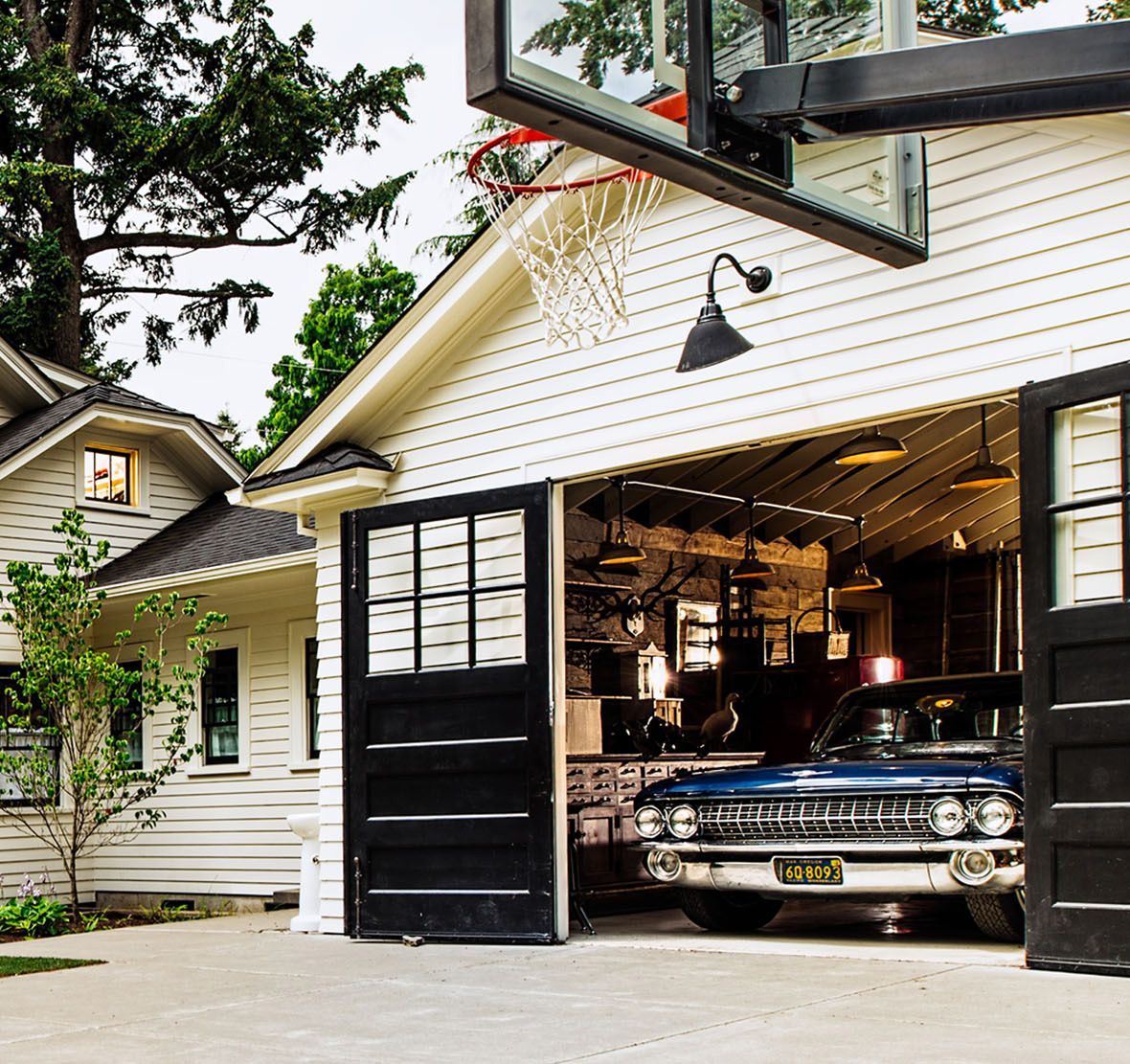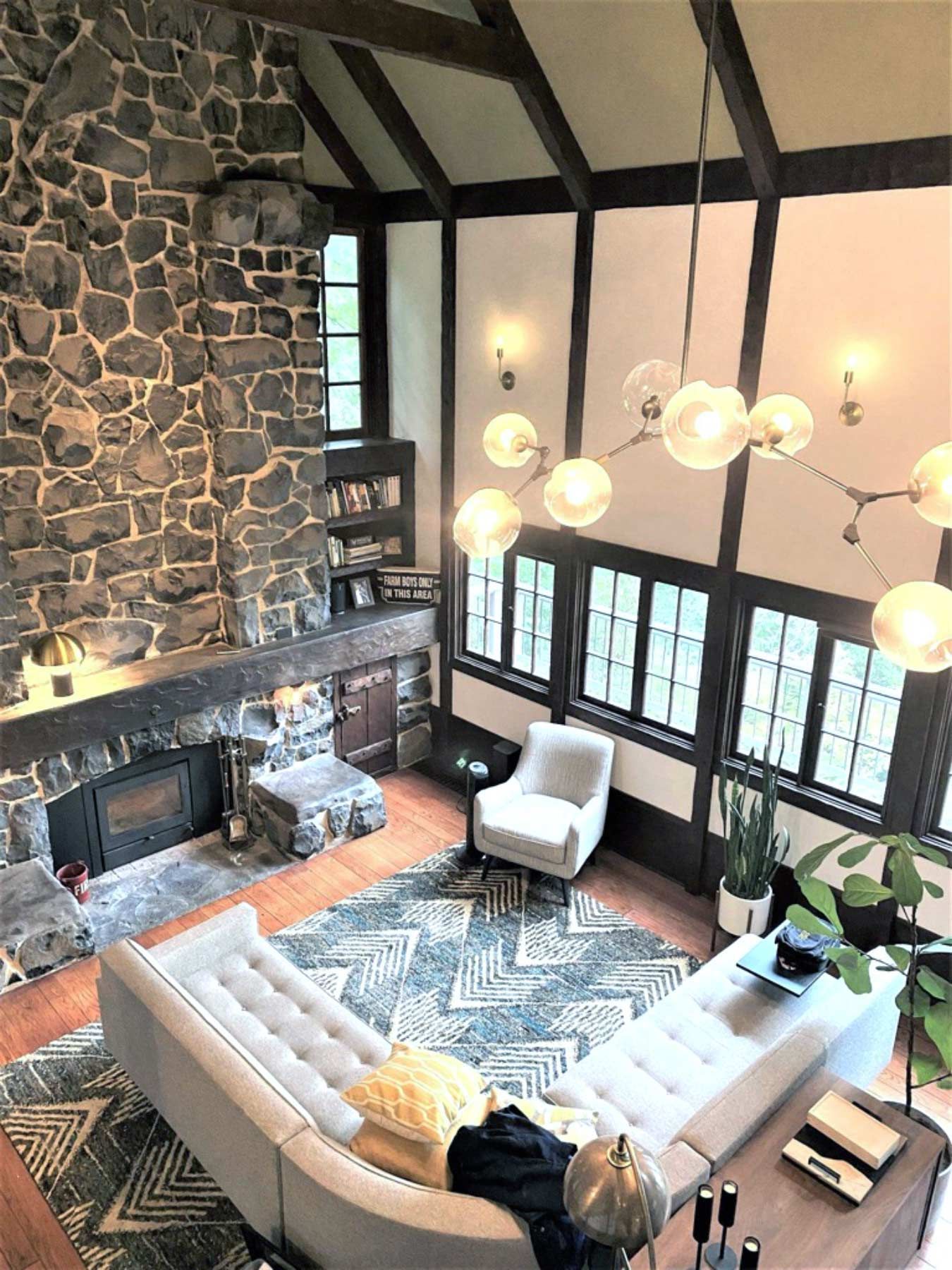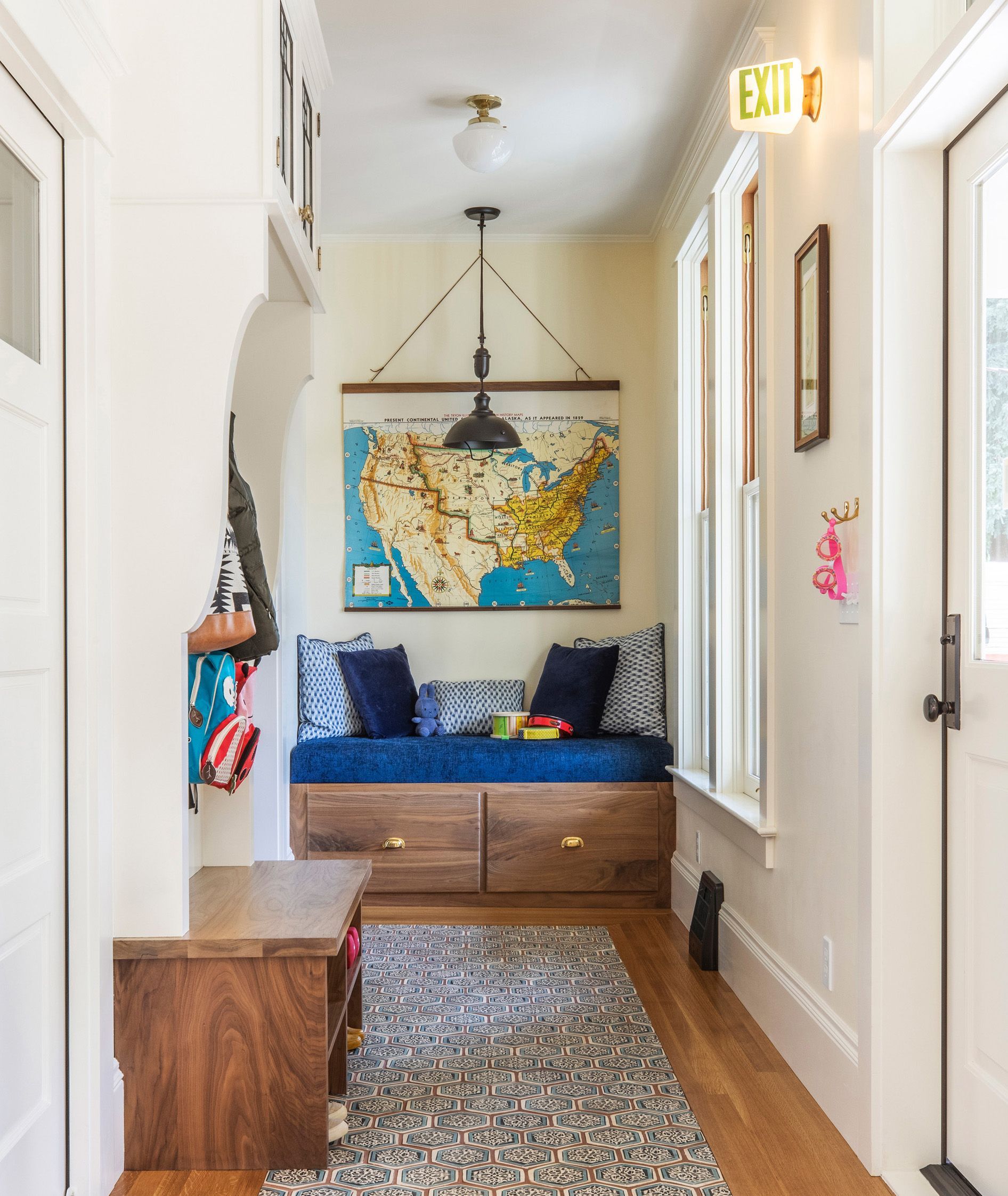Interested in a FREE Initial Design Consultation? Click HERE
Your Whole House Plan Part Three: The Basement and Beyond
Now that you have completed your upper floor renovations you are ready to tackle the basement and some exterior finishing touches. You should have already addressed any water management, seismic or hvac updates, allowing you to focus your energy on the creation of living space that will make good use of your basement real estate.

This daylight basement, designed by Arciform Principal Designer Anne De Wolf with interior styling by Shannon Quimby, serves a dual purpose as the family’s media room and a swanky space for entertaining.
The real attraction of a basement renovation lies in the glory of all that untapped potential: a whole house footprint of space just waiting to be claimed for the good of the family… or guests… or the mother-in-law. Which brings us to the most important questions to ask when tackling the basement portion of your whole house plan:
- Who will be the primary users of this space?
- Which activities will the space be used for?
This will affect your design and budget in a variety of ways. For example, those polished concrete floors (shown above) make a sophisticated statement as a party room or home office but may be a challenge for small children.

This basement renovation by Arciform Senior Designer Kristyn Bester builds convenient bike racks along with essential storage tucked behind lockers and in under-stair niches. Photo by Photo Art Portraits.
On the other hand, your mother-in-law may not value easy access to bike storage, but your teenagers certainly will.
Some practical logistical questions to address with your design team will be:
- Does the space have enough ceiling height to meet code as a finished space?
- Which modifications (if any) need to be made to the interior or exterior stairs to accommodate your plan?
- How will you provide code-required emergency egress?
- How will you provide access to mechanical systems (like furnaces and electric panels)?
- Where will you put everything that used to be in the basement (including laundry facilities)?

For this daylight basement remodel designed by Arciform Senior Designer Kristyn Bester, a new staircase was installed with custom millwork. Dead space under the stairs was transformed into an adorable little playspace for their daughter. Photo by Photo Art Portraits.
Unless your stairs are unsafe or placed in a location that is unworkable with your proposed design, we will often recommend leaving the existing stairs in place, since existing stairs are often “grandfathered in” and will not need to comply with current code.

For this project designed by Arciform Senior Designer Kristyn Bester, we spiffed-up the existing stairs with carpet, paint and updated millwork. Photo by Photo Art Portraits.

For this basement designed by Arciform Principal Designer Anne De Wolf, a stacking washer and dryer were tucked behind a barn door in the bathroom, retaining the room’s original use. Photo by Photo Art Portraits.
You’ll also want to consider egress. If there will be a bedroom in your basement, it will need to have a window that fits specific criteria designed to allow for escape in case of fire or emergency.
There are other options for meeting egress requirements depending on the location of your doors and stairs. Your design team will help you identify the most cost-effective solution that fits your design goals.

A peaceful Buddha peeks in through the egress window in this this basement renovation by Arciform Principal Designer Anne De Wolf, setting a serene tone for the room.
Next you’ll want to consider which level of finish your rooms require. This can range from fully-carpeted rooms with a finished ceiling to a more industrial look with polished concrete and exposed ducting.

By spraying the ceiling a dark color and sealing the concrete floor, Arciform designer Kristyn Bester was able to give this basement family room a polished look at lower cost. Photo by Photo Art Portraits.

At the other end of the spectrum, carpeting and a dropped ceiling with integrated can lights give this basement designed by Arciform Principal Designer Anne De Wolf a finished and family-friendly feel. Photo by Photo Art Portraits.
Finishing Touches
Once your interior renovations are complete, you are ready to tackle some of the finishing touches to your exterior that are best-saved for last.
Here are the 3 things to save till last on your whole house to-do list:
- Replace Your Roof

Any mechanical upgrades to your home or additions can lead to your existing roof getting pierced in multiple places to allow for venting and other components to be installed. If you are contemplating a whole roof replacement, wait until your interior projects are complete.
2. Paint Your Exterior

The intricate paint job on this “painted lady” Victorian would have been easily damaged by workmen and equipment going in and out of the home as the interior projects were completed. Project designed by Arciform Principal Designer Anne De Wolf. Photo by Photo Art Portraits.
Painting the exterior of your home before your interior renovations are complete is a bit like putting your makeup on before you finish getting dressed. You CAN do it without having to re-do the paint job when you are through, but do you want to risk it?
3. Install any Landscape or Decorative Concrete

The decorative pavers and succulent-focused landscape design were designed and installed after this main floor master suite addition designed by Arciform Principal Designer Anne De Wolf. Photo by Photo Art Portraits.
You won’t want construction equipment and debris rolling over and passing through your brand new concrete driveway or patio. And of course delicate plantings need minimal foot traffic in order to be established properly. So save your exterior landscape and concrete work for the very end.
A thoughtful and detailed whole house plan will save you time, money and heartache over the lifetime of your home. Whether you choose to execute your whole vision over a span of a few months or one phase at a time over a decade, your plan will ensure that the end result will be architecturally cohesive, logistically efficient and truly suited to your family’s changing needs over time.
Ready to get started on creating your own Whole House Master Plan?
Contact restore@arciform.com to schedule your initial design consultation.
We look forward to helping you create a vision that will support your home renovation goals for years to come!
Want to Review Your Whole House Plan?
See More Stories




Oregon: CCB# 119917 | Washington: ARCIFL *910KJ


